Simple Summary
– about two days after pollination, or a day after fertilization, corn silks degrade and detach from ovules (potential corn kernels) and provide the earliest indication of successful pollination/fertilization
– the “shake test” – peeling back ear husks, giving it a tap and observing how many silks remain attached – can quickly provide an indication of pollination progress or success
– by blister stage (about 2 weeks after pollination) developing kernels should make pollination very clear
– successfully pollinated/fertilized ovules can still abort during early grain fill – it is important to be able to identify the difference between the two when troubleshooting tip-back issues in corn
Scouting corn at or slightly after pollination can give a good picture of pollination success. While corn pollination goes off without a hitch most years, it can be nice to have a handle on things at pollination timing to troubleshoot any issues that might arise later, especially during stressful conditions like drought.
Corn Silk Detachment Provides the Earliest Indication of Successful Pollination.
We don’t have to wait until we see developing kernels to evaluate pollination success – the earliest indication of successful pollination comes a couple days after pollination and fertilization when corn silks degrade and detach from fertilized ovules (Fig. 1).
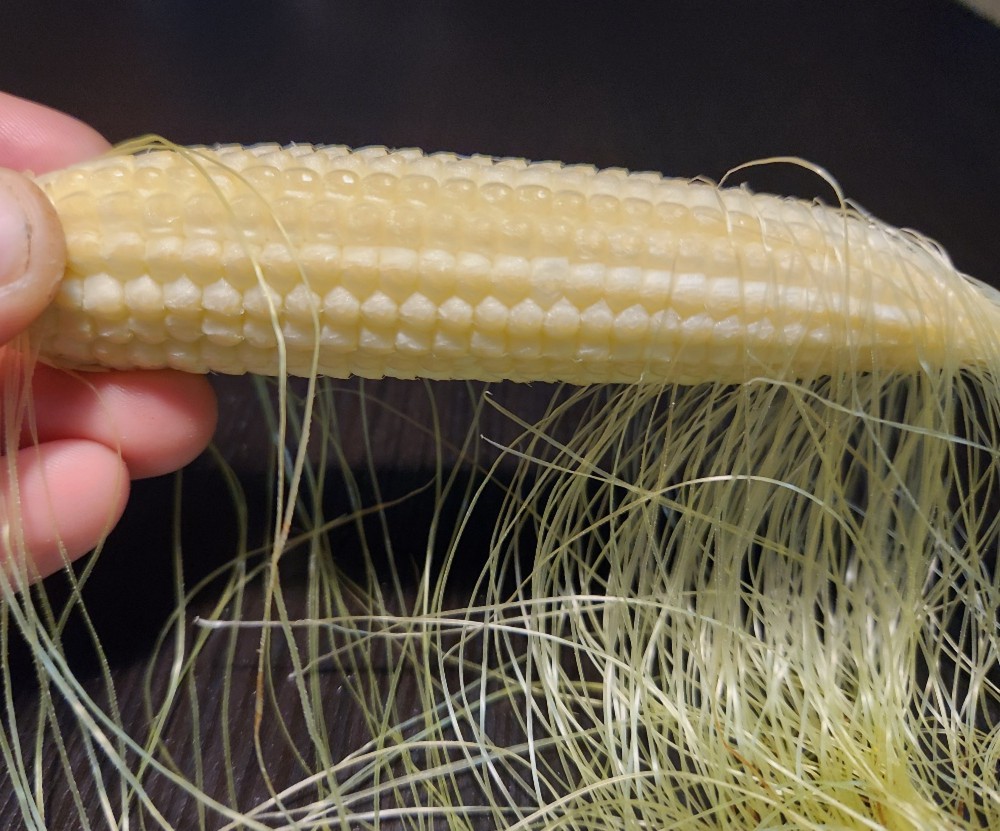
Figure 1. A corn ear at the silk emergence or R1 stage where silks have largely detached from the more mature bottom half of the ear (left side) but are still largely attached to the less mature top half (right side).
At silking or R1 stage, silks have started to visibly emerge from husks. Every potential kernel on an ear of corn exists as an ovule at this point – the structure of the female part of the flower which eventually forms seeds. Every ovule has a silk which must grow outside of the husks to receive pollen. Botanically speaking, the silk serves as the stigma – the pollen receptive part of the female flower.
Pollination is the process of moving pollen from the stamen (the pollen producing parts of male flowers) to the stigma (the pollen receptive parts of female flower). For corn, this would be pollen shedding from the anthers in the tassel to the silks emerging from the ear husks.
Fertilization is the process of the male and female gametes fusing in the ovary of a flower. For corn, this starts when a pollen grain lands on a corn silk or silk hair, germinates and grows a pollen tube into and down the length of the silk. Once the pollen tube reaches the embryo sac in the ovule, the pollen tube ruptures and the male gametes from the pollen combine with female gametes of the embryo sac (Kiesselbach, 1949).
About 2 days after pollination, or 1 day after fertilization, the silk degrades and detaches from the ovule (Pioneer, 2023). A silk detaching from an ovule is a good sign that successful pollination and fertilization of that ovule has occurred. Silks remaining attached to ovules (Fig. 2) suggests that fertilization has maybe not yet occurred.
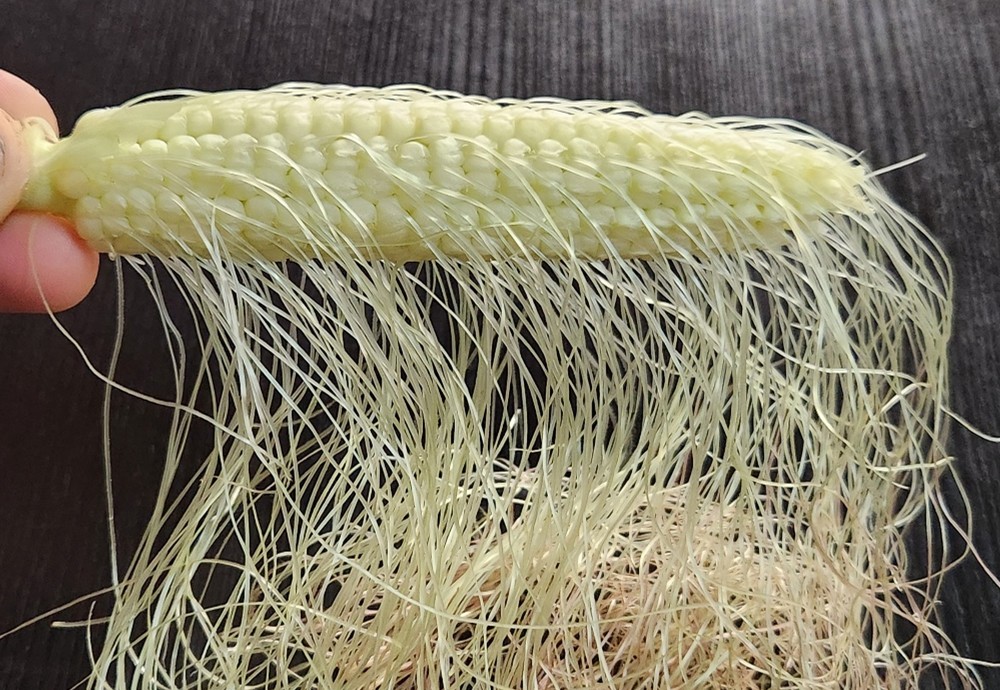
Figure 2. A corn ear at the silking or R1 stage where silks have emerged from husks but are still mostly attached to the ovules.
Use the “Shake Test” To Evaluate Silk Detachment
When corn is in the silking or R1 stage, carefully remove husks (cutting the ear in half lengthwise may make this easier) and give the ear a light tap. Silks on ovules that have pollinated and fertilized at least a day or two prior will have degraded near the ovule and should readily separate. Those that have not will remain attached. At later grain fill stages, even silks of unfertilized ovules will eventually degrade and may no longer be attached to ovules. This test will be less useful, but in later stages developing kernels will make fertilization success very clear.
Ovules at the Base of the Ear Are the Most Mature and the First to Emerge Silks
The ovules at the base of the ear (closest to the ear shank) were the first to form when the ear was in it’s initial stage. They are the oldest, and despite their distance to the ear tip are usually the first silks to emerge from the husks. Ovules are progressively less mature and silks later to emerge as you move from the base of the ear to the tip. Differences in kernel pollination and development often reflect this gradient.
Blisters Can Later Be Used to Confirm Successful Pollination and Fertilization
By the blister or R2 stage (about two weeks after silking) successful pollination and fertilization will be much more obvious. Small, white, fluid filled “blisters” will have emerged from the glume tissues of fertilized ovules. Very early emergence of blisters (before they start to resemble kernels and turn white) from glume tissues is shown in Fig. 3. By late blister stage or early milk or R3 stage (when kernels turn yellow colour but are still mostly liquid filled and sweet), unfertilized ovules will be obvious as they remain flat and covered by glume tissues (Fig. 4).
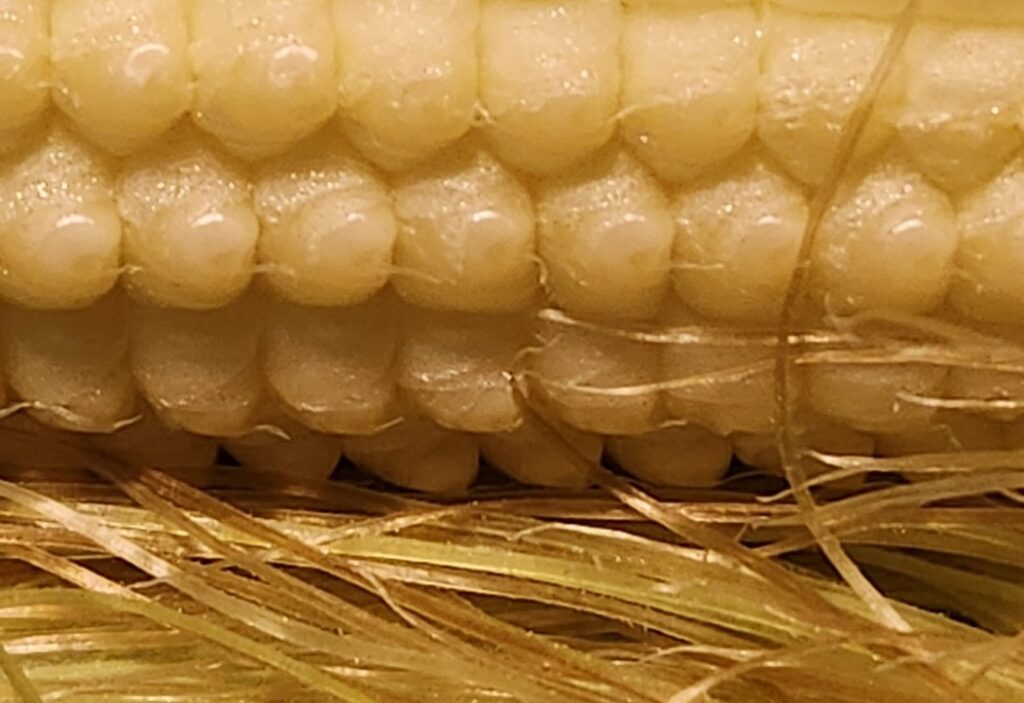
Figure 3. Fluid filled “blisters” of developing kernels just starting to emerge from the glume tissues of fertilized ovules shortly after fertilization.
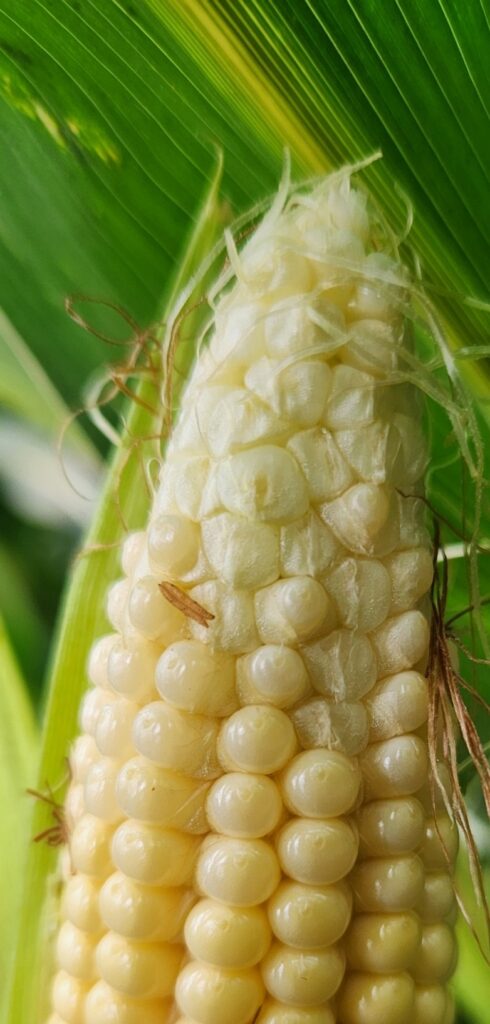
Figure 4. Ear tip of corn in the early milk or R3 stage (kernels just turning yellow) with flat, glume-covered unfertilized ovules at the ear tip.
Successfully Fertilized Ovules Can Still Abort During Early Grain Fill, Know the Difference
As the saying goes, don’t count your chickens until your eggs hatch. The assessment above gives a good idea of pollination and fertilization success but would still be too early to make any conclusions about final kernel counts in the field. Abortion of kernels can occur if grain fill cannot keep up with the number of kernels set, particularly during the earlier part of grain fill (e.g. R1 to R3) (Nielsen, 2025).
This could be a function of an excessively large sink (e.g. larger than normal kernel set that a plant could not be expected to fill under normal conditions) or a stress during grain fill that reduces the supply of photosynthates and nutrients to grain (e.g. loss of physical leaf area such as from hail damage, loss of photosynthetically active leaf area from nutrient deficiency or disease, or reduced photosynthetic output from stresses like drought or extreme high or low temperatures) (Nielsen, 2003).
Scouting again at milk or R3 stage or later is a good time to evaluate for both i) kernels that did not pollinate/fertilize and ii) those which aborted. Kernels typically abort from the tip end of the cob where they are least mature. Aborted kernels appear shrunken and translucent in colour with small yellow embryos still visible inside (Figure 4). Both poor pollination and abortion can contribute to “tip-back” which may be observed in some fields during later grain fill. Knowing the difference between unfertilized ovules and aborted kernels may help pinpoint when tip-back occurred. Knowing exactly why might be more difficult.
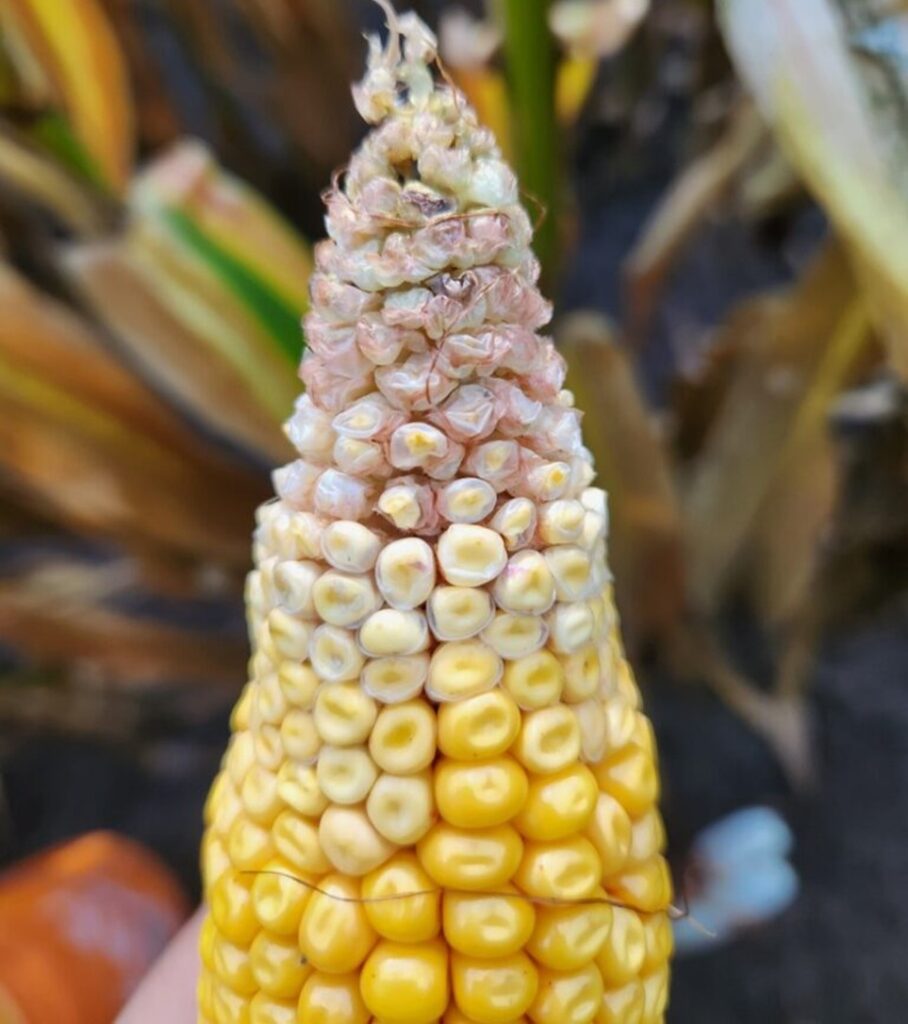
Figure 5. Tip end of corn cob in the dent or R5 stage with unfertilized ovules at the very tip end, aborted kernels (white or translucent shrunken appearance with yellow embryo visible inside) in the middle of the picture and regularly developing kernels in the bottom of the picture.
References
Kiesselbach, T.A. 1949. The structure and reproduction of corn. Research Bulletin 161. University of Nebraska College of Agriculture Agricultural Experiment Station.
Nielsen, R.L. 2003. Tip fill problems in corn. Purdue University. https://www.agry.purdue.edu/ext/corn/news/articles.03/TipFill-0917.html (accessed 20 Aug. 2025).
Nielsen, R.L. 2025. Effects of severe stress during grain filling in corn. Purdue University. https://www.agry.purdue.edu/ext/corn/news/timeless/GrainFillStress.html (accessed 20 Aug. 2025)
Pioneer Seeds. 2023. Pollination in corn: timeline of key steps. Pioneer Seeds. https://www.pioneer.com/us/agronomy/pollination-corn-timeline.html(accessed 20 Aug. 2025)